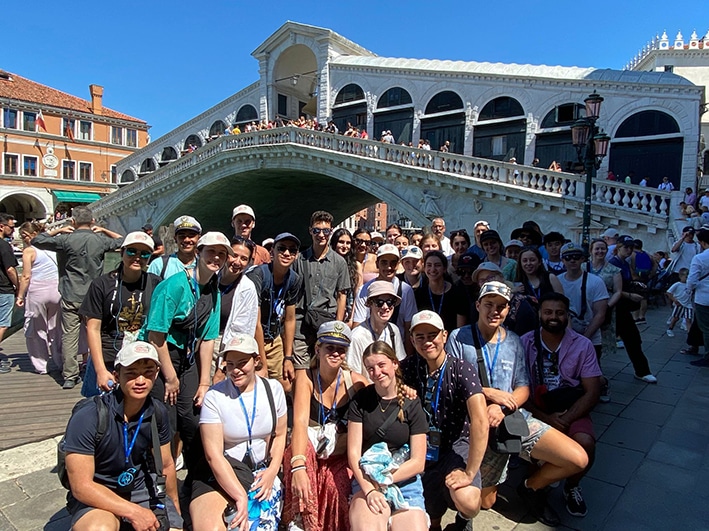
My chum Neil on The Catholic Weekly Facebook page recently said something that inspired this week’s column. He was responding to my recent piece on how the under 40s in the church in Australia seem to be different from the over 40s, especially in my survey results.
Neil has admitted he’s in the latter group. He found it unusual and worrying that younger Catholics were now so critical of their elders—it’s the reverse of the older generation complaining about young whippersnappers.
I replied that I thought we could reframe it. The sexual revolution and various church dramas had temporarily disrupted the normal way we transmit the faith from older people to younger people.
Now, younger Catholics want to re-establish a connection with the former path and pick up where it left off. It’s what Pope Benedict XVI called the hermeneutic of continuity, not of rupture.
Neil thought this was like trying to turn the clock back. So we agreed to disagree.
Looking at this exchange in the wake of World Youth Day gave me food for thought. My UNDA colleague Stephen Bullivant—and Pope Benedict XVI again—have talked about a “creative minority” effect among young Catholics.
To be a faithful young Catholic in Australia today means swimming hard against a strong cultural tide. You must really “get your Catholic weird on”—really invest in your beliefs in the face of a world that thinks you’re wasting your time.
You must also be prepared for older Catholics to snub you or be dismissive and patronising when you talk about the beauties of adoration, going to confession, and celebrating Mass entirely unaided by clay pots and nylon draperies.
I know that our young Catholics have been doing this for years. They form their own subcultures in friendship groups, parishes, and university chaplaincies where they support and teach each other.
They’re all over the internet. They use wonderful resources like Word on Fire and Ascension Press to help educate themselves and others.
They’re drawn to courageous priests who have come through the same fiery formation and speak the same language. This feeds into new priestly and religious vocations, and strong young marriages and singles who are open to life and committed to seeking the Kingdom.
This group has featured prominently in my survey results, and I’m delighted to hear from them.
These under-40 Catholics have quite different beliefs and practices from the over-40s, and they’re in church pretty much every Sunday and often on weekdays.
Of course, out in the real world, they’re a tiny group compared to the 90 per cent of Catholics in Australia who never darken a church door except for weddings and funerals.
And they’re also a minority in most parishes, which are dominated by the over-40s (or over 60s, to be honest—the 40s and 50s age group have a really low rate of Mass attendance).
These faithful young Catholics are open to learning from older Catholics who they can trust.
And Catholics under 40 have already worked out who they can trust, and it certainly isn’t every older Catholic.
It’s been made very hard for young Catholics to trust their elders. We’re almost back at the Free Speech Movement in the 1960s in the US, where radical Jack Weinberg coined the phrase “Don’t trust anyone over 30.”
Older Catholics have been surprised and a bit miffed to hear “OK Boomer” in a resigned tone from younger Catholics.
But that’s because the Boomers have been used to thinking of themselves as the heirs of Vatican II; the young radicals, and the future of the church.
It’s why they tend to erase St Paul VI, John Paul I, St John Paul II, and Benedict XVI from their church timeline. They seem to prefer simply clicking St John XXIII and Pope Francis together like two bits of Lego.
But the young Catholics under 40 are the true heirs of Vatican II.
They’ve read the council documents and have seen them fleshed out and brought to life by all the popes since then.
They can see an unbroken line between then and now. And they’re not afraid of being in such small numbers, because they know that God doesn’t need much to get things going.
He just needs yeast that can be mixed through a lot of plain flour, and salt that can be sprinkled on a very bland world.
They are excited about the future of the church in Australia, and they should be. It’s theirs for the taking.
